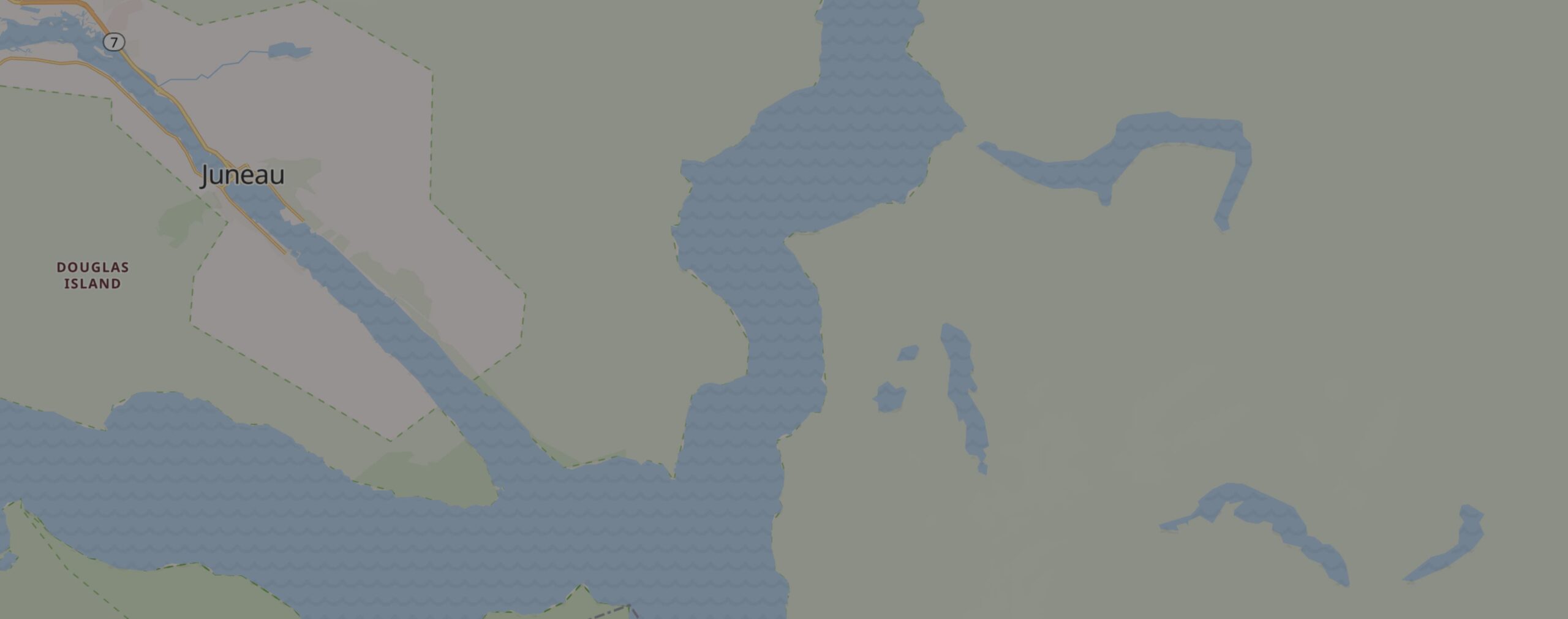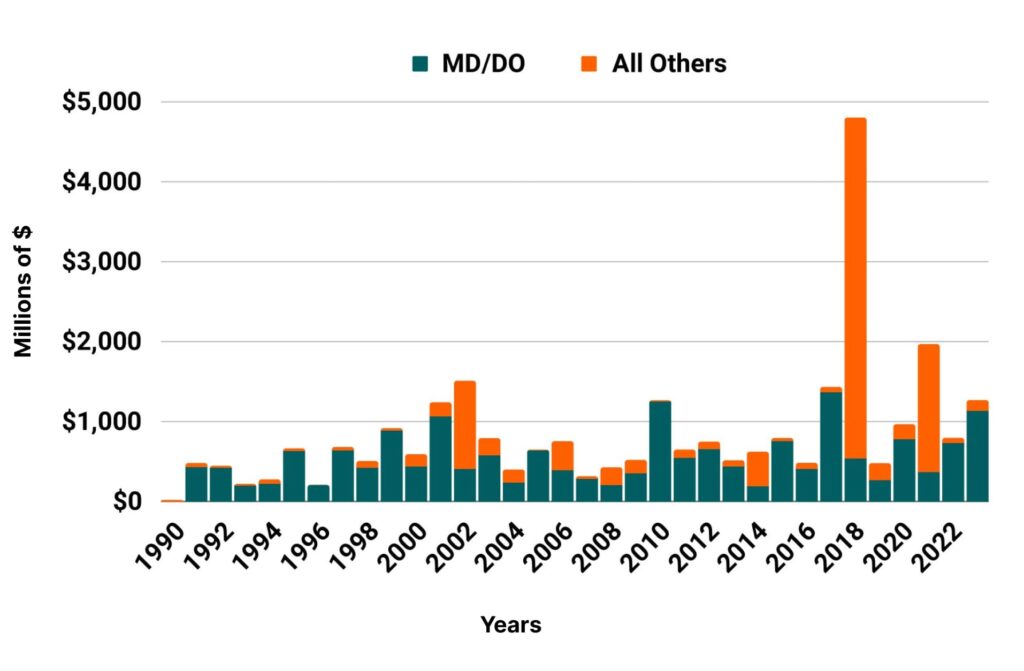Start Your Custom Quote Process™

Malpractice Insurance for Doctors & Physicians in Alaska
Let our specialists compare medical malpractice insurance quotes for your practice in Alaska
Our partners








Table of Contents
- Medical Liability Claims Trends for Alaska Healthcare Providers
- How to buy malpractice insurance in Alaska.
- How to save money on your malpractice insurance.
- How much does medical malpractice insurance cost in Alaska?
- Medical malpractice requirements in Alaska.
- Find Coverage for your Practice
- Client Testimonials
- Best medical malpractice insurance companies in Alaska.
- Why partner with Cunningham Group in Alaska?
- Historic medical malpractice insurance rates in Alaska – since 2000.
- History of malpractice insurance in Alaska.
- Resources for Physicians.
Alaska Malpractice Insurance
Premiums for Alaska physicians are modest, with doctors in the Last Frontier state paying about one-quarter as much as similar physicians in the five most expensive states. Much of this is due to the Alaska state legislature, which has passed many forward-thinking reforms to the state’s medical liability system. These reforms include founding the Medical Indemnity Corp. of Alaska (MICA) in 1975 to serve as a non-profit state agency with the mission of making medical malpractice insurance coverage available to all Alaska physicians. Originally, a mandate was included requiring all Alaska physicians to obtain insurance through MICA, but the mandate was rescinded a few years later and other insurers have since entered the market (Read more about MICA and how it provided malpractice relief for physicians in Alaska.)
Our 2023 Physician Buyers Guide for purchasing malpractice insurance in Alaska gives you the information necessary to obtain the strongest, most financially secure policy at the best price. When shopping for coverage, you need a full view of the Alaska marketplace to find the company that best fits your situation. Choose a broker that can offer medical malpractice insurance quotes from all the major insurance companies in Alaska.
Medical Liability Claims Trends for Alaska Healthcare Providers
Alaska NPDB from 1990 to 2023

How to buy malpractice insurance in Alaska
The best way to buy malpractice coverage is to work with a reputable malpractice insurance broker in Alaska who can generate multiple quotes. Your broker will walk you through the lengthy insurance application and underwriting process. Click to get medical malpractice insurance quotes from every major Alaska malpractice insurance company..
Typically, the malpractice insurance purchasing process goes like this:
- Submit your information for your free medical malpractice insurance quote from every major insurance company in Alaska.
- One of our veteran malpractice insurance agents who specializes in the Alaska market will contact you to learn more about your specific needs.
- We shop your coverage to every major insurance company in Alaska.
- We present you with a number of insurance quotes and give you the information necessary to make an educated and informed decision. Don’t worry. We’re here every step of the way, helping you get the best price with the best company.
- At renewal time, we restart the process of shopping your coverage among every major carrier to keep your policy properly priced.
How to save money on your malpractice insurance
- The easiest way to save money on your medical malpractice insurance policy is by working with a broker who has the access to generate quotes from every major insurance company, offering an accurate view of the marketplace. As one of the top brokers in Alaska, we can guide you through the application and underwriting process so you’re confident you secured the best price with the right insurer for your situation.
- The most common limits in Alaska are $1 million/$3 million. Limits of liability play a major role in determining the overall cost of your policy. Some companies will offer lower limits to save you money. We don’t recommend this. We want your risks fully indemnified so you never have to pay an award out of pocket. Let us save you money by shopping your coverage rather than skimp on protection.
- Check out our 7 secrets your medical malpractice insurance agent won’t tell you page to get insider information on buying coverage in Alaska.
How much does medical malpractice insurance cost in Alaska?
Rates for physician malpractice insurance don’t vary much depending on where you practice within the state. Most major insurance companies classify Alaska as a single territory, which means your specialty’s base rate does not vary depending on your practice address. But you still want multiple quotes to get an accurate view of the marketplace. This is one of the many reasons it’s important to work with an insurance agency that specializes in medical malpractice insurance. Below are mature, base rates with no credits or discounts. We typically get our clients a 30-50% reduction from these rates:
Alaska
- Internal Medicine Average Rate $6,719
- General Surgeon Average Rate $24,189
- OB/gyn – Average Rate $31,918
Other Specialties
The cost of your malpractice coverage can vary greatly due to a number of factors, including your claims history, the type of patient interactions you have, the insurance company you are placed with and more. Cunningham Group created this premium estimation tool by drawing from its database of thousands of physician clients. Below are five malpractice estimation premium buckets to gauge how expensive your coverage should be. The buckets are numbered 1 to 5 — with #1 being the least expensive and #5 the most costly.
- Lowest
- Low
- Medium
- High
- Highest
Medical malpractice requirements in Alaska
Limits of Liability: The most common limits of liability in Alaska are $1 million per claim with an annual aggregate cap of $3 million.
Most hospitals require a physician carry malpractice insurance prior to granting admitting privileges. Some of the hospital systems requiring this include, but are not limited to, Providence Alaska Medical Center, Alaska Regional Hospital and Fairbanks Memorial.
Find Coverage for your Practice
-
Individual Physicians
Learn MoreFind peace of mind for your practice. Allow us to locate suitable malpractice coverage from top providers, offering multiple quotes for your convenience.
-
Tail Coverage
Learn MoreSecure your future with Tail Insurance. Protect yourself from past claims with extended liability coverage—multiple quotes to match your needs.
-
Medical Directors
Learn MoreLead confidently with comprehensive malpractice coverage. We specialize in finding tailored plans from various providers for medical directors like you.
-
Telemedicine Coverage
Learn MoreNavigate the virtual frontier with confidence. We help find comprehensive malpractice coverage for telemedicine practitioners, offering multiple quotes.
-
Moonlighting Coverage
Learn MoreMoonlight with confidence when you have the right protection. Get various malpractice coverage options, ensuring you’re covered wherever you practice.
-
Surgeons
Learn MoreLet us identify the ideal malpractice coverage from top providers so you can focus on excellent surgical outcomes.
-
OBGYNs
Learn MoreSecure specialized malpractice coverage for women’s health. We provide tailored solutions with multiple quotes to meet the specific needs of OBGYNs.
-
Dermatologists
Learn MoreProtect your dermatology practice confidently. We specialize in comprehensive malpractice coverage, delivering multiple quotes so you can choose the one that matches your needs.
Client Testimonials
Below is what a few clients have to say about our prices and service. We know that cost and trust are the two most important factors when shopping for your medical malpractice insurance. We pride ourselves at being the best at both!
Family Practice in AlaskaDavid was extremely helpful in finding the exact insurance that our company needed and at an affordable price. He was most helpful in answering questions IN PERSON, unlike other insurances. In the past I have had difficulty in getting to talk directly with an insurance agent. David got our insurance arranged very quickly.
Best Medical malpractice insurance companies in Alaska
- Medical Protective
- The Doctors Company
- NORCAL
Why partner with Cunningham Group?
Partnering with Cunningham Group will give you a full view of the Alaskan marketplace. We can get you quotes from all the major insurance companies and help you choose the policy that best fits your needs and budget. Our veteran insurance agents average 10+ years of industry experience. Let us help you secure medical malpractice insurance quotes from every major insurance company in Alaska.
Historic Medical Malpractice Insurance Rates in Alaska for Physicians
Brief History and other important facts of medical malpractice insurance in Alaska
Since the initial reforms in 1975, Alaska has continued to pass important reforms, including the 1997 Alaska Tort Reform Act. Also known as HB 58, this Act capped the dollar amount of awards for punitive and noneconomic damages, limiting the award for injury or death to the greater of $400,000 or the injured person’s life expectancy in years multiplied by $8,000, with limits of $1,000,000 or the person’s life expectancy in years multiplied by $25,000 in cases of permanent physical impairment or severe disfigurement. The act also revised the state’s liability allocation system from joint and several to several and created a 10-year statute of repose (actions for wrongful death must be brought within two years).
In 2005, the Alaska legislature further tightened damage caps through the Alaska Medical Injury Compensation Reform Act, setting the cap to $250,000 in cases where the injury is determined to be less than 70 percent disabling. For injuries resulting in death or that are 70 percent or more disabling, the caps remain at $400,000.
In 2012, the Alaska Healthcare Commission studied the effects of 1997 and 2005 legislation and found that the reforms “made a positive impact on the cost of medical liability coverage for Alaska’s medical sector.” Their key findings on malpractice insurance rates:
- In 1996 medical professional liability rates for physicians in Alaska were approximately two times those in northern California (considered the “gold standard” in liability reform)
- Today, in 2012, Alaska’s medical liability costs are in line with those in northern California
On Sept. 14, 2018, the Alaska Supreme Court significantly strengthened the protection for records and materials submitted to, or reviewed by, peer review organizations with its landmark decision interpreting the Alaska Medical Peer Review Statute. In a unanimous decision reversing two lower court rulings, the Alaska Supreme Court in Mat-Su Valley Medical Center v. Bolinder (Mat-Su v. Bolinder) ruled that the medical peer review statute prohibits discovery of data, information, proceedings and records of medical peer review organizations, but does not protect from discovery a witness’s personal knowledge and observations or materials originating outside the medical peer review process. The Supreme Court ruled that the Alaska Medical Peer Review Statute protects from discovery “all data and information acquired by a review organization in the exercise of its duties and functions.” Thus, all of the materials presented to the peer review committees were privileged and not subject to discovery. Mat-Su v. Bolinder is the first time the Alaska Supreme Court has considered the scope of the medical peer review statute in a material way even though the statute was originally enacted in 1976.